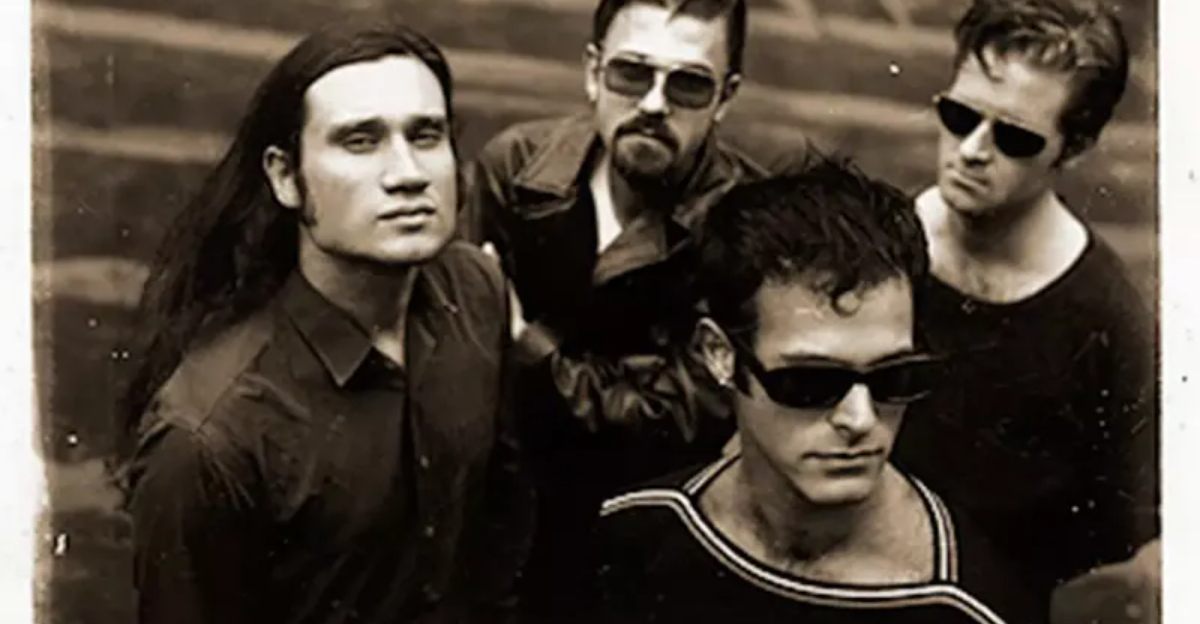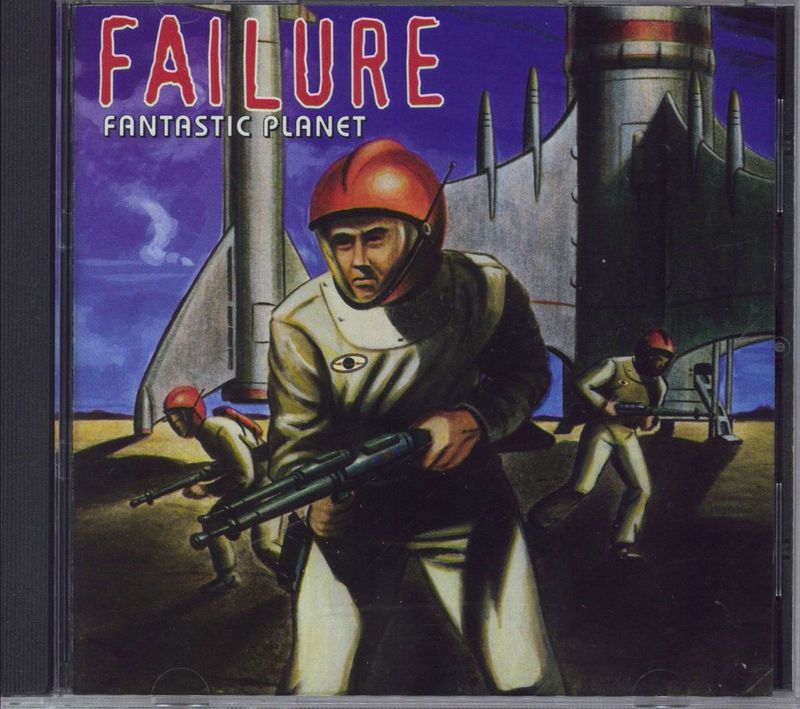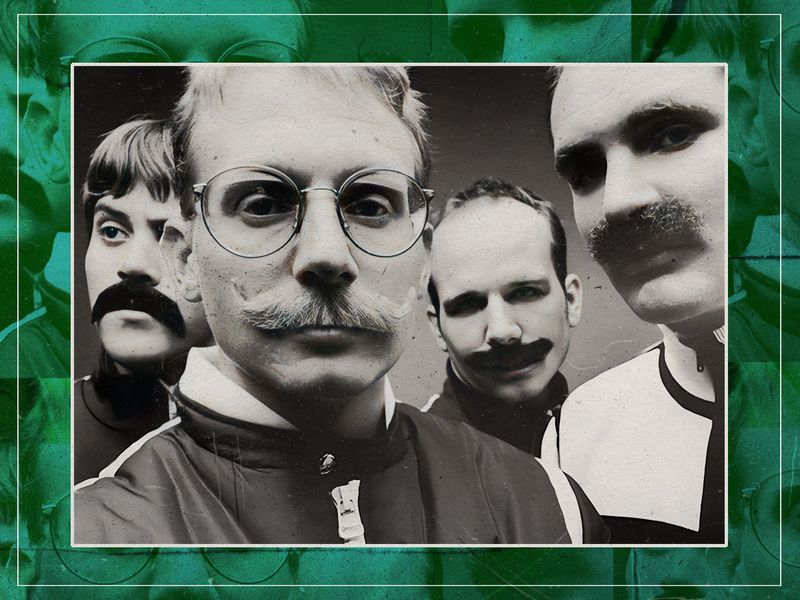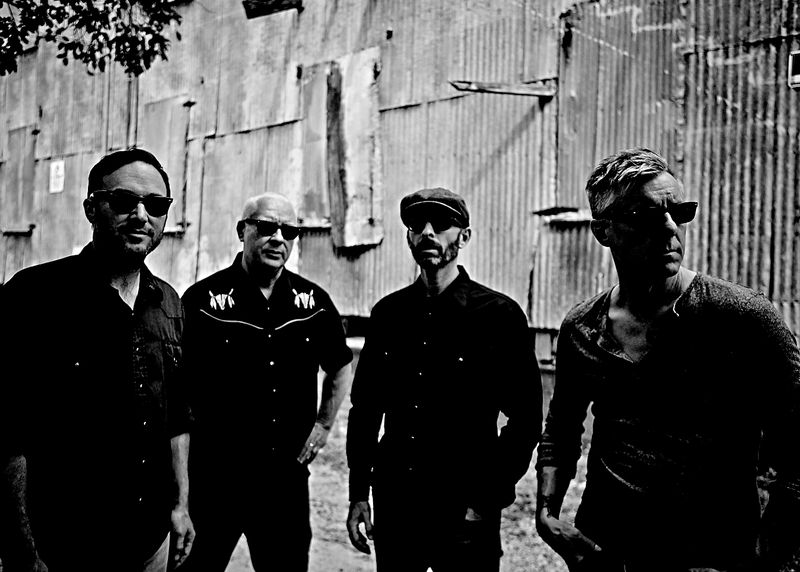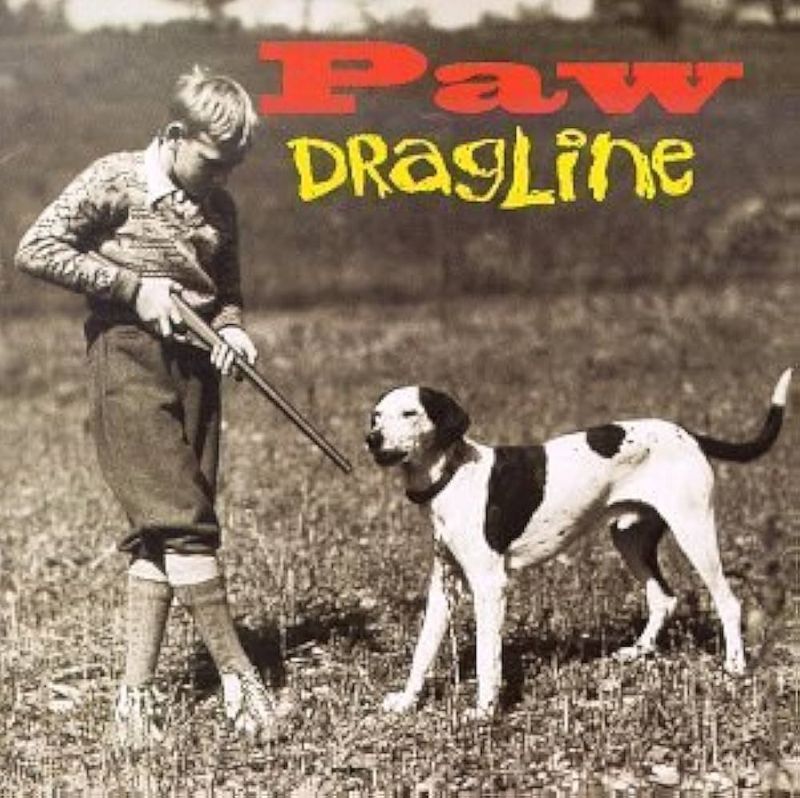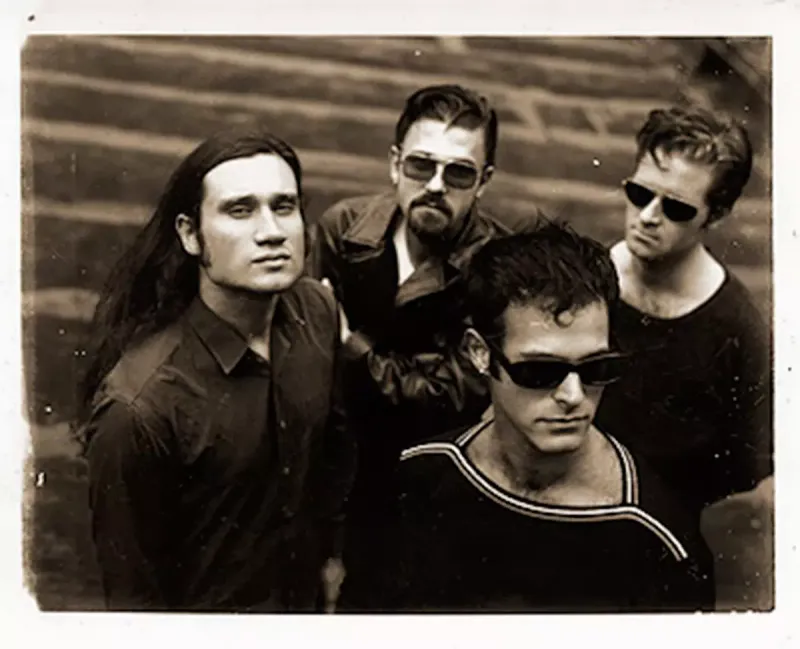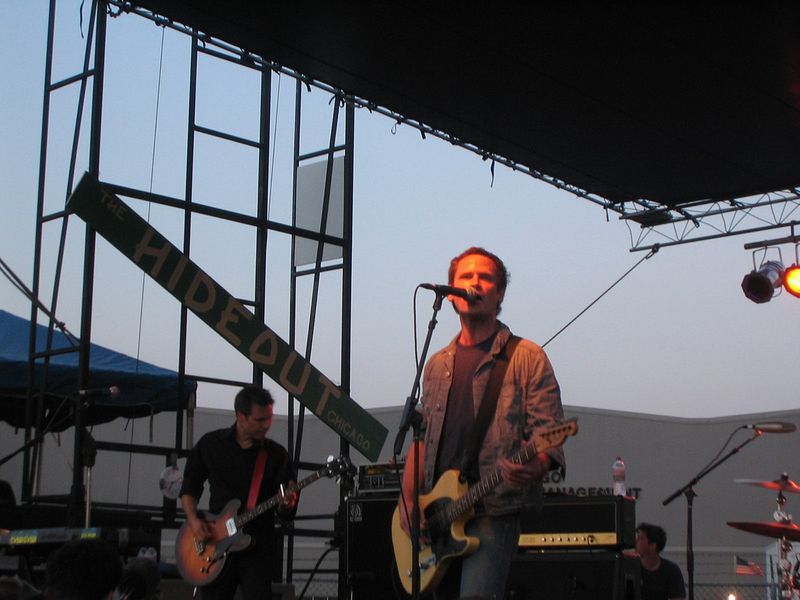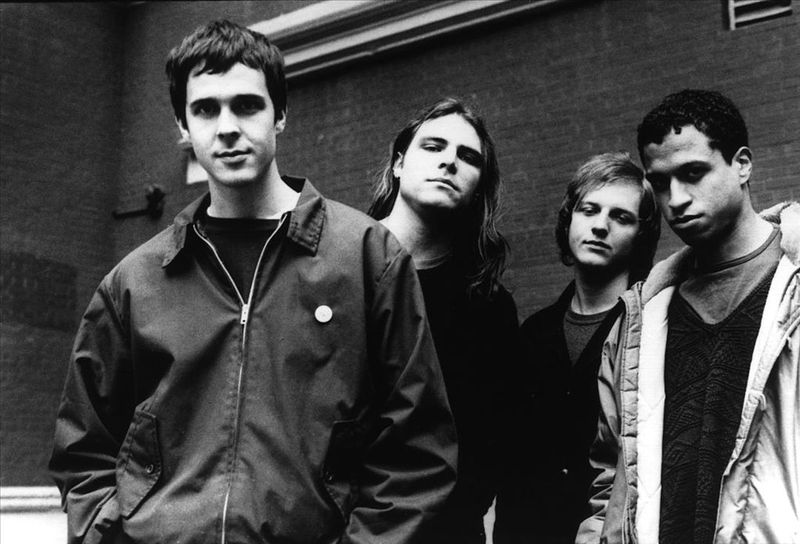The 1990s gave us grunge, alternative rock, and post-punk revivals that changed music forever. While bands like Nirvana and Pearl Jam became household names, many equally talented groups remained in the shadows. These forgotten rock acts created innovative sounds and influential albums that still resonate with music lovers today. Let’s rediscover some incredible ’90s bands that should have been much bigger than they were.
1. Failure
Floating through cosmic soundscapes while delivering gut-punch riffs, Failure created a musical universe all their own. Their 1996 masterpiece “Fantastic Planet” arrived too late for the grunge wave yet too early for the space-rock revival that would follow years later.
The band’s meticulous production techniques and layered compositions set them apart from contemporaries. Guitarist Ken Andrews pioneered recording methods that would influence a generation of producers.
Despite critical acclaim, label troubles and substance issues derailed their momentum. Their legacy lives on through bands like Tool and Deftones, whose members cite Failure as a profound influence. The band’s eventual reunion in 2014 proved their cult following had only grown stronger during their absence.
2. Hum
Champaign, Illinois birthed one of the ’90s most thunderous yet melodic bands. Hum created a perfect storm of shoegaze textures and bone-crushing heaviness that would later inspire countless space-rock and metal acts.
Their brief brush with MTV success came via “Stars,” a perfect encapsulation of their sound—cosmic lyrics floating atop devastating guitar work. The band’s 1995 album “You’d Prefer an Astronaut” became a touchstone for musicians seeking to merge beauty with brutality.
Frontman Matt Talbott’s soft-spoken vocals contrasted brilliantly with the band’s seismic instrumental approach. Though they disbanded in 2000, their surprise 2020 comeback album “Inlet” proved they hadn’t lost any of their sonic power during their two-decade hiatus.
3. The Toadies
Emerging from Fort Worth with a sinister swagger unlike anything else in the post-grunge landscape, The Toadies brought Texas-sized menace to alternative rock. Their 1994 breakthrough “Rubberneck” featured the delightfully disturbing hit “Possum Kingdom,” a tale of lakeside seduction with possibly murderous undertones.
Frontman Todd Lewis delivered his unsettling narratives with a distinctive howl that set the band apart from their contemporaries. The group’s secret weapon was their ability to incorporate bluesy, almost Southern rock elements while maintaining alternative credibility.
Label disputes delayed their follow-up album for years, killing their momentum at the height of their powers. Still, tracks like “Tyler” and “I Come From The Water” remain perfect examples of the dark, twisted storytelling that made ’90s rock so compelling.
4. Paw
Kansas-bred rockers Paw unleashed a unique hybrid of grunge ferocity and heartland rock sincerity. Their 1993 debut “Dragline” featured the haunting “Jessie,” a song about a man’s devotion to his aging dog that showcased their emotional range.
Vocalist Mark Hennessy’s distinctive, raspy howl brought authenticity to tales of Midwestern struggle and personal demons. The band’s sound incorporated unexpected country and folk influences alongside their bone-crushing heaviness.
Guitar work that could shift from delicate to devastating in seconds made their sound instantly recognizable. Despite critical acclaim and a major label deal with A&M Records, Paw never received the promotional push needed to break through nationally. Their raw, unfiltered approach might have found a larger audience in today’s more genre-fluid music landscape.
5. Local H
Two guys making the noise of a full band—Local H pioneered the bass-less rock duo format years before The White Stripes made it famous. Scott Lucas’s modified guitar setup allowed him to play both guitar and bass parts simultaneously while belting out sardonic lyrics about suburban malaise.
Their 1996 breakthrough “As Good as Dead” featured the slacker anthem “Bound for the Floor” (known to many as “the copacetic song”). The album perfectly captured mid-’90s Generation X disillusionment with surprising wit.
Drummer Joe Daniels provided the thunderous backbone to Lucas’s one-man-band approach. Despite lineup changes and label shifts, Local H never stopped touring or releasing quality albums. Their workmanlike persistence and refusal to chase trends have earned them one of alternative rock’s most devoted cult followings.
6. Shudder to Think
Former hardcore punks who evolved into avant-garde art-rockers, Shudder to Think defied categorization at every turn. Despite signing to major label Epic Records during the post-Nirvana gold rush, they refused to compromise their experimental tendencies.
Craig Wedren’s operatic falsetto and unpredictable vocal gymnastics immediately set them apart from their flannel-clad peers. Their 1994 masterpiece “Pony Express Record” remains one of the decade’s most challenging yet rewarding rock albums, featuring jagged time signatures and unconventional song structures.
The band later found success scoring films like “High Art” and “Velvet Goldmine,” showcasing their cinematic sensibilities. Though too weird for mainstream success in the ’90s, their fearless experimentation influenced a generation of math rock and art-punk bands that would emerge in the 2000s.
7. Jawbox
Washington D.C.’s Jawbox carried the torch of post-hardcore into new melodic territory. When they jumped from independent Dischord Records to major label Atlantic, they proved integrity and accessibility could coexist without compromise.
Their 1994 album “For Your Own Special Sweetheart” balanced angular, dissonant guitar work with surprisingly catchy hooks. The single “Savory” briefly broke through to MTV but deserved far more attention than it received.
J. Robbins’ thoughtful lyrics and distinctive vocal approach elevated their songs beyond typical punk fare. The dual-guitar interplay between Robbins and Bill Barbot created intricate textures rarely heard in aggressive music. Their influence can be heard in countless bands that followed, from Burning Airlines to Foo Fighters, whose producer Barrett Jones worked on Jawbox’s major label debut.
8. The Afghan Whigs
Cincinnati’s Afghan Whigs fused the raw energy of grunge with the emotional intensity of classic soul music. Frontman Greg Dulli’s brutally honest lyrics explored the darker sides of relationships with unflinching detail and self-awareness.
Their 1993 masterpiece “Gentlemen” stands as one of the decade’s most harrowing breakup albums. The band’s incorporation of R&B elements was revolutionary for a rock band of their era, predating the genre-blending approach that would become common decades later.
Live shows became legendary for their sweaty, cathartic intensity and unexpected cover songs. Despite critical acclaim and a devoted following, mainstream success eluded them. The band’s sophisticated sound and mature themes perhaps resonated more with older listeners than the teenage audiences that drove ’90s alternative rock sales.
9. Girls Against Boys
Armed with a unique dual-bass attack and Scott McCloud’s whiskey-soaked vocals, Girls Against Boys created some of the sexiest, most menacing rock of the ’90s. Their sound—part noise-rock, part post-punk, part industrial—created a dark, throbbing atmosphere unlike anything else in alternative music.
The 1993 album “Venus Luxure No.1 Baby” established their signature sound: pulsing bass lines, jagged guitars, and McCloud’s half-spoken, half-sung delivery. When major labels came calling during the post-Nirvana signing frenzy, GVSB seemed poised for breakthrough success.
Unfortunately, their major label debut was delayed until 1998, when the alternative rock boom had already faded. The band’s sleazy, film-noir aesthetic and sophisticated sound were perhaps too cerebral for mainstream audiences. Nevertheless, they remain influential to bands exploring the darker, more sensual side of rock music.
10. Quicksand
Rising from the ashes of legendary hardcore band Gorilla Biscuits, Quicksand brought unprecedented musicality and depth to post-hardcore. Frontman Walter Schreifels created a blueprint for intelligent heavy music that balanced aggression with melody and introspection.
Their 1993 debut “Slip” featured the perfect blend of punishing rhythms and soaring choruses. The band’s secret weapon was their rhythm section—Alan Cage’s jazz-influenced drumming and Sergio Vega’s melodic bass work provided a sophisticated foundation for Schreifels’ innovative guitar approach.
Despite critical acclaim and tours with major acts like Rage Against the Machine, mainstream success remained elusive. Internal tensions led to their premature breakup in 1995. Their influence, however, can be heard in countless bands that followed, from Deftones (who later recruited Vega) to Thursday and Title Fight.
